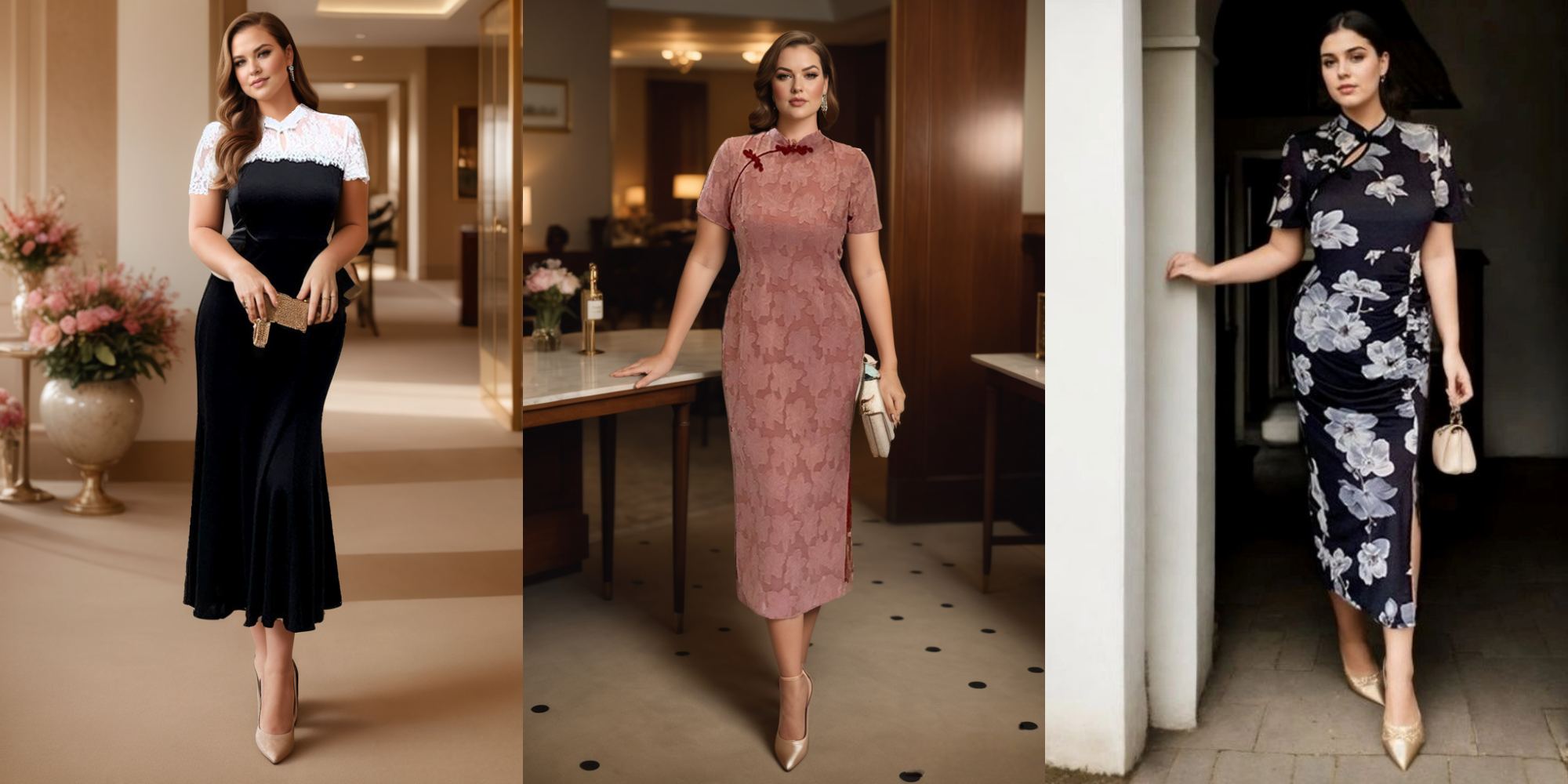Is It Okay for a White Person to Wear a Cheongsam?

The cheongsam, also commonly known as the qipao (旗袍), is a traditional Chinese dress. It is easily recognizable with its slim dress silhouette, high neck collar, and thigh high side slit. This dress style originated from the Qing dynasty, moved on to being a modern day fashion statement for fashionable Chinese ladies in twentieth-century Shanghai, and the current times. The cheongsam represents both Chinese heritage and undying splendor.
In recent years, cultural exchange has ended up more obvious than ever—thanks to international travel, digital media, and fashion’s worldwide spread. But this openness also brings vital questions. A question that many are now concerned with is: “Is it okay for a white person to wear a cheongsam?”
Let’s thoroughly unpack this question now:
1. Cultural Exchange vs. Cultural Appropriation
The line among appreciation and appropriation is diffused however enormous.

-
Cultural appreciation means displaying actual interest, mastering understanding of the origins, and honouring the meaning underlying a cultural symbol.

-
Cultural appropriation includes the use of factors of any other subculture in a way that is insensitive, disrespectful, or removed from its meaning—especially when it is performed for earnings or fashion without context.
Wearing a cheongsam can in reality be a form of cultural appreciation, while worn respectfully.
2. What Do Chinese People Think?

Perspectives inside the Chinese network vary, much like in any big cultural group. However, many Chinese people view foreigners sporting a cheongsam positively—especially while the garment is worn thoughtfully and within the right context.

In reality, at some point of weddings, Chinese New Year celebrations, or cultural fairs, it’s not unusual for non-Chinese visitors to be invited to wear conventional attire. For plus size women, it is very normal to wear plus size formal dresses in the western style, but to wear a Chinese inspired version for the formal event can show high respect for the wedding organizers. It’s often seen as a gesture of admiration and admiration for Chinese tradition.
Some even say: “We’re proud of our way of life, and we love it whilst others recognize it too.”
3. Historical and Global Influence

The cheongsam is now a common part of fashion runways. From its original Chinese roots, it has infused into contemporary fashion capitals like Paris, London, and New York. Many fashion designers have successfully collaborated with Chinese artists to uplift and inspire this historical garment.

The beautiful clothing piece of the cheongsam, is now not just a treasure for the Chinese but also a common stay in the fashion community. It has inspired style not just in China but everywhere else for its elegant nature, irrespective of ethnicity.
4. When Wearing a Cheongsam is Appropriate
Here are some useful tips:
✅ Learn its importance
Understand the records of the cheongsam, specifically its roots in Chinese identity and resistance throughout the early 20th century. It was a symbol of modern femininity. Women in the cities wore this clothing style very regularly. More casual fabrics and styles were used for day to day errands while more those with glamorous fabrics were worn for formal occasions like weddings and important dinners. It was a sign of the modern Chinese women.

✅ Wear it with care.
Choose Chinese dresses that reflect traditional layout. Avoid changing it in ways that sexualize or mock the original intention. Modern Chinese women are wearing the cheongsam in more updated manner, with see-through fabrics and modern touches like metallic Chinese frog buttons. Don't be afraid to wear cheongsams with modern updates if they are not worn with a negative intention.

✅ Consider the context.
Wearing a cheongsam to a cultural celebration, wedding, or respectful photoshoot is normally welcomed. Wearing it as a “dress” or without context can sense insensitive. Wearing a cheongsam as lingerie for a White person is highly inappropriate as it sexualizes the clothing. Wearing a cheongsam just to look sexy is also not right.

✅ Listen to remarks
If someone from the community expresses soreness, be open to backing out. It’s now not continually about being “right”—being respectful is the human thing to do.
5. Representation Matters—And So Does Respect

Celebrating cultures through style can be a stunning way to bring humans together collectively. As long as it’s performed with expertise, humility, and purpose, carrying a cheongsam isn’t just “ok”—it can be a powerful act of appreciation.

Fashion has usually been a communique between cultures. Through listening to others, learning from others, and celebrating beauty thoughtfully, we create more understanding and harmony in our international community.
In these days of division among hard lines, everything has become sensitive and potentially offensive. When we see things in a more positive manner, everything becomes lighter and fun. Many Chinese people are actually welcoming towards foreigners appreciating their culture. Many a times foreign tourists have worn the qipao in their travels in China and receive positive feedback from the Chinese on the streets, like a smile from them or positive comments and conversations with the local Chinese as a result.
We seem to have forgotten that the world is united in positivity, kindness and appreciation for others. The qipao may have its roots in China, but its beauty is not just restricted to the Chinese. Much like any other national costume can be worn by someone from another culture, with respect and appreciation for the beauty of it.
Let us not let fear and worry of judgment stop ourselves from gelling with people of other communities, or to express our positive views on another community's fashion. In this fraught ridden world, let us lead the charge and influence others to unite as fellow citizens of the planet.
Conclusion: Yes or no?

Yes, it's surely okay for a white person, in fact, for anyone, to wear a cheongsam. The secret to achieve this is with recognition, attention, and actual appreciation.

Let’s retain the diversity of our international historical past—not by drawing strains and conflicts, however by constructing bridges.
Have you worn a cheongsam or been a part of a cultural birthday celebration before? Share your experience and what you discovered.

